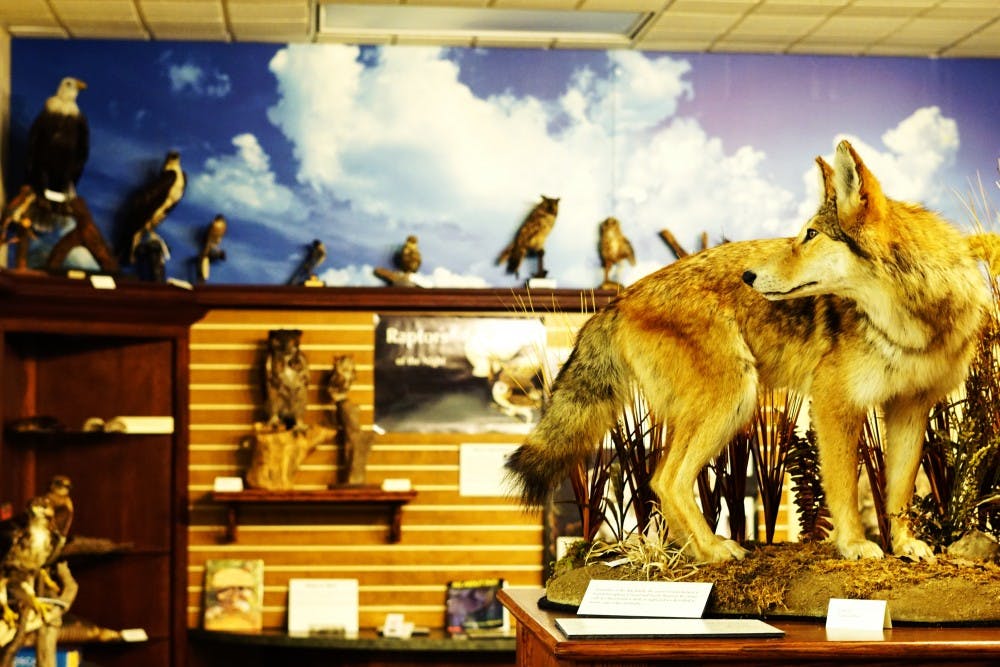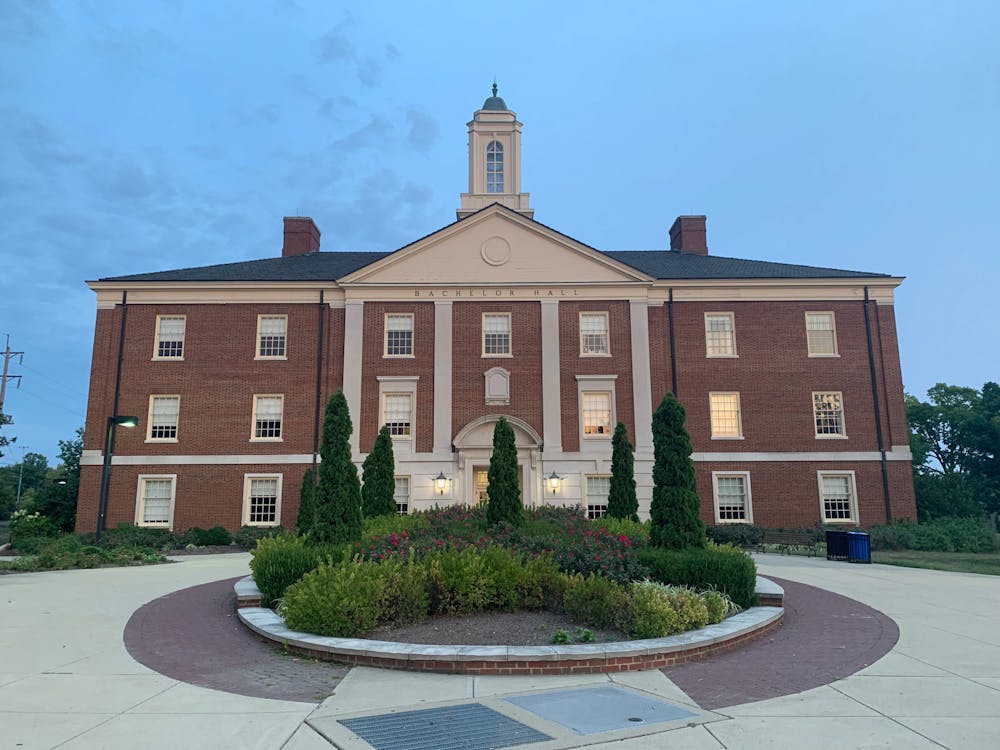After completing renovations over this past J-term, Miami's Hefner Museum of Natural History is rolling out the red carpet to welcome visitors to the improved exhibits.
However, the "red carpet" is only figurative, as a main objective of the renovations was, in fact, to remove the old carpeting. Instead, to welcome patrons, a taxidermied brown bear beckons passersby to visit the museum which is stationed at the main entrance of Upham Hall.
"The old carpeting had buckled, and it had become a safety hazard," said Steven Sullivan, director of the museum. "Carpeting isn't good for museums, as it can harbor pests that patrons bring in on their shoes and, in turn, damage the specimens. So, the renovations had to happen eventually."
Sullivan believes the carpet fiasco was actually a timely blessing, as other projects resulted from the facelift. New labels for the specimens were written and placed, and student volunteers are currently scanning and 3-D printing some of the more unwieldy specimens that cannot typically be placed in the Discovery Trunks the museum loans out to local elementary classrooms.
"The specimens that are too delicate, heavy or rare to be placed in a trunk are being scanned and printed so we can now bring those things to the community, whereas we couldn't before," Sullivan said.
Hefner museum serves about 8,000 patrons on-site annually and another 4,000 off-site, through the Discovery Trunks program and presentations by museum staff.
The museum staff is also currently working on upgrading their curriculum to match the state standards to better serve the classrooms who utilize their facility and services.
"We serve not only Miami students and professors, but the surrounding tri-state region," Sullivan said. "We are working on catering to those extreme audiences. Right now we are working with a student in the computer science department to develop an app for the Francis Gallery where visitors can scan a QR code and choose the level of engagement they'd like to experience in the exhibit, and then read that level of detail in the labels provided on their device."
Sarah Mariette, a first-year zoology and anthropology major, volunteers for Hefner museum and helped with the renovation process.
"Before winter break, I worked a lot on packaging up specimens to keep in storage and moved the signs down to storage as well," Mariette said. "It was a really cool opportunity to learn about the best methods for storing specimens. After J-term, I have been involved with redoing many of our exhibits, bringing up specimens and signage and making it all fit. I learned how to use a drill so I could help hang up mounts. All of the volunteers have had a hand in this renovation one way or another, and it's been really fun."
There are about 15 student volunteers working at the museum, each contributing four hours of work every other week. The volunteer schedule is customized to each student's needs, making it easier for any student to get involved.
Mariette elaborated on the varied tasks for which student volunteers are responsible.
Enjoy what you're reading?
Signup for our newsletter
"Every day at the museum is different," Mariette said. "The volunteer work is really hands-on and there is an opportunity to work on a wide variety of tasks. Some things I've done are work on solutions for lighting in the gallery, assist with exhibit design, hang mounts and move specimens, set up for classes that use our classroom, help with our reorganization process."
Currently, Mariette is working on designing a bookmark.
"Our work applies to every student," Sullivan said. "And I'd love to have a robust discussion with students on whether that's true. These are student-driven projects, and they give students practical experience ... We'd like to emphasize that we want to collaborate with all students."




